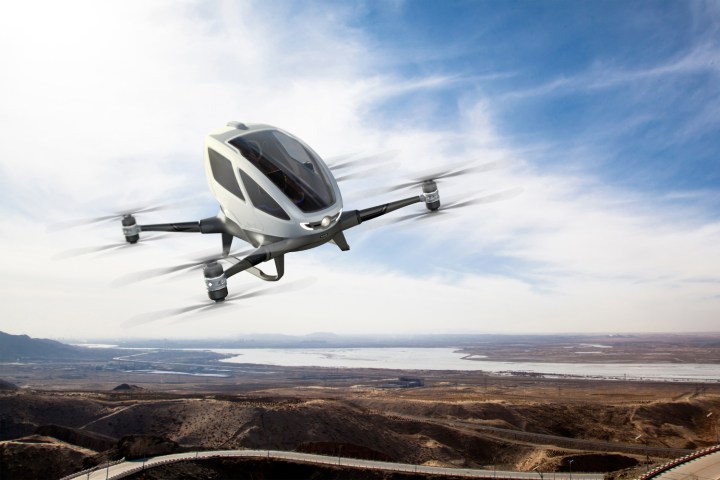
Lung Biotechnology, a subsidiary of United Therapeutics, is known for its lung manufacturing technology, which it developed to help patients with pulmonary arterial hypertension and other end-stage lung diseases. The list of critically ill patients requiring a lung transplant to live is very long, while the supply of available organs from donors is extremely scarce. To help meet this need, Lung Biotechnology has developed methods of creating lungs and other organs using stem cells and xenotransplantation techniques.
To get its manufactured organs to patients, Lung Biotechnology wants to use Ehang’s 184 drones. The company hopes to station these MOTH rotorcraft at its manufacturing facilities, making them available for the immediate transport of recently produced biomaterial. Once loaded with the organ samples, each drone can be preprogrammed to fly to a nearby hospital that can use the organ for transplant. This fast and efficient transport is essential as it allows Lung Biotchnology to provide hospitals with viable organs precisely when they are needed. “We anticipate delivering hundreds of organs a day, which means that the MOTH system will help save not only tens of thousands of lives but also many millions of gallons of aviation transport gasoline annually,” said Lung Biotechnology Chairman and CEO Martine Rothblatt, Ph.D.
Lung Biotechnology is optimistic that the company will receive the necessary permissions to begin its MOTH operation. These certifications include the approval of the MOTH rotorcraft by the Federal Aviation Administration and approval of the company’s xenotransplantation organ products by the Food and Drug Administration.
Editors' Recommendations
- DJI leak suggests a smaller FPV drone may be incoming
- Walmart is starting to deliver your packages by drone
- UPS and CVS will use drones to deliver prescription drugs
- U.S. may call a halt to its civilian drone program over security fears
- From pizza to transplant organs: What drones will be delivering in the 2020s




